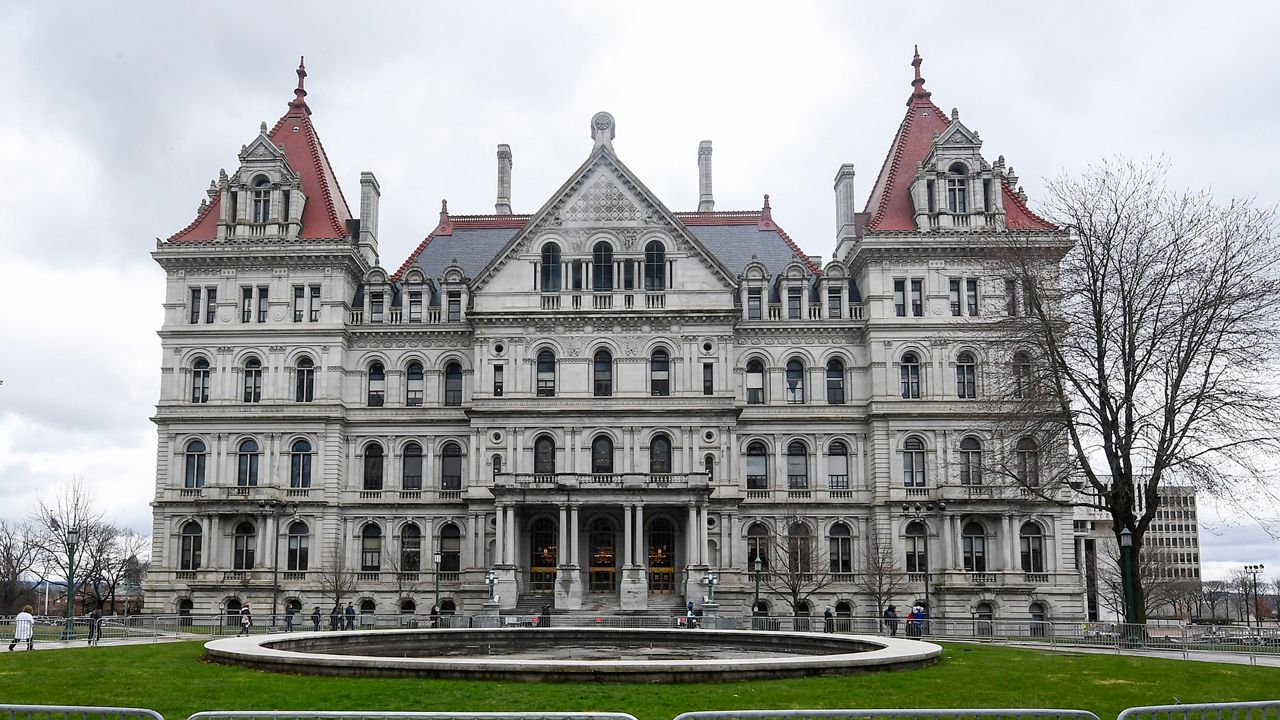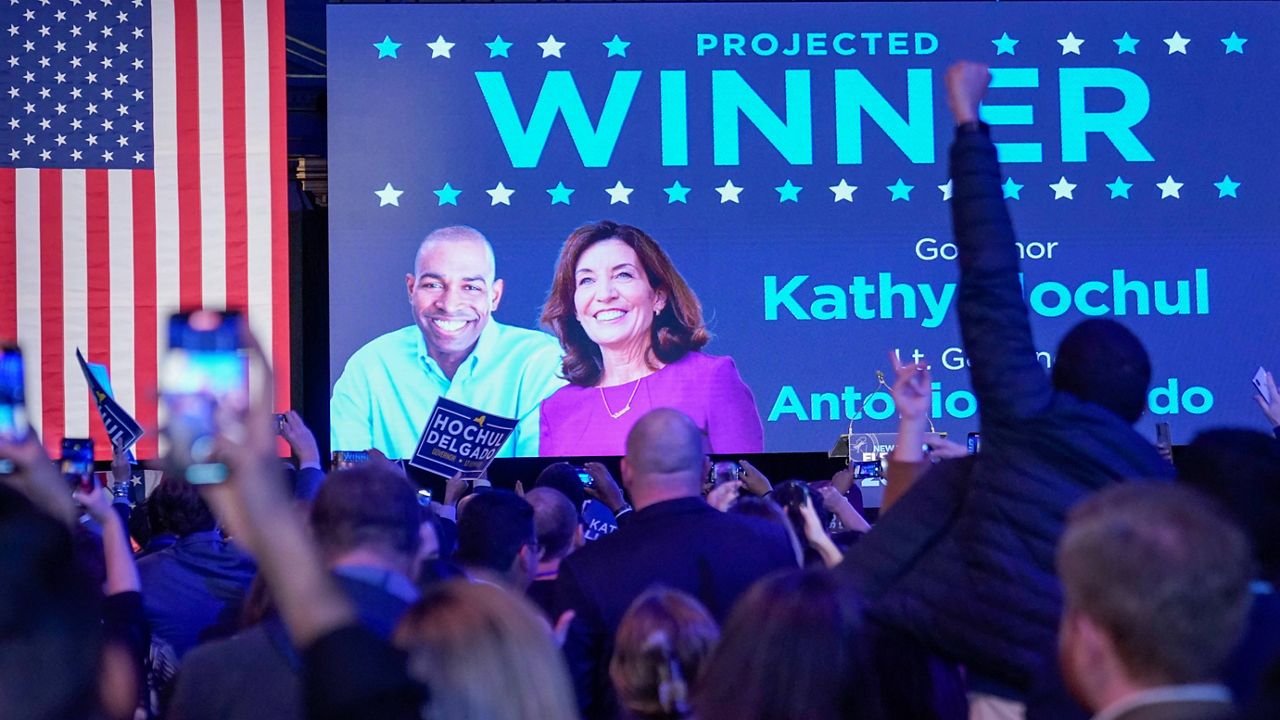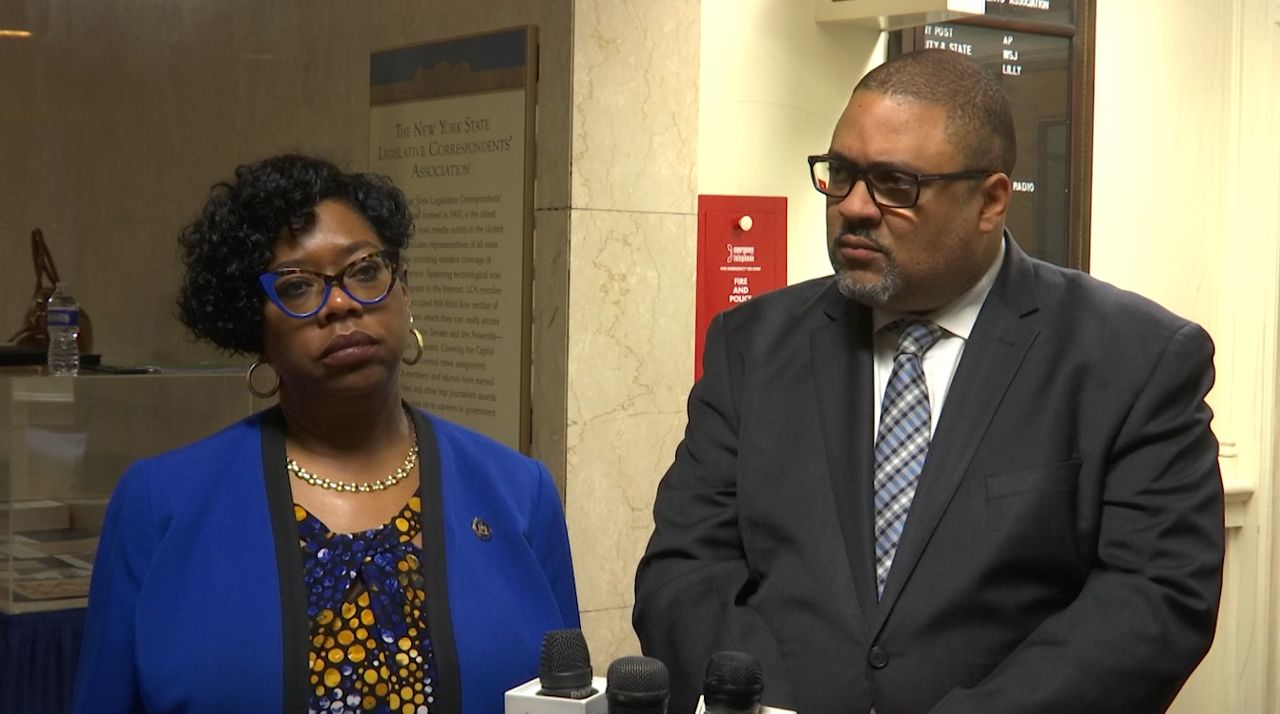Next week, if all goes as expected, New York Gov. Kathy Hochul will get the lion's share of support from New York state Democrats at the party's convention. It's the culmination of the first six months in office for Hochul governing a vast and complicated state.
Hochul has had some lucky breaks: An avalanche of cash from tax revenue and the federal government can never hurt a governor in an election year. But observers say she has also had something of an extended honeymoon period, devoid of histrionics and major blowups that can upend an elected official.
So, how did Hochul move to conquer New York's politics?
SUNY Albany adjunct professor Bruce Gyory chalks a lot of it up to doing the work.
"Gov. Hochul has, does it the old fashioned way she has earned it," he said. "Her outreach to the Democratic Party has mirrored her outreach to the Legislature, and in many ways the two roads, have merged. She has melded the bully pulpit focusing on going around the whole state, so that she has been seen and covered in virtually every media market."
Money in the state's coffers has enabled her to propose a something-for-everyone kind of budget — even allowing lawmakers to negotiate an unallocated pot of money to determine how much should be spent for workers who did not qualify for pandemic aid from the federal government or how to help tenants and landlords.
Her budget proposed spending money to fight potholes and hire more health care workers.
There have been some unforced errors. Her use of state aircraft while attending political functions led to her campaign reimbursing the state $19,000. But on the politics side, the most competitive challenger, Attorney General Letitia James, pulled the plug on her campaign for governor in December. Polls have shown her remaining challengers, New York City Public Advocate Jumaane Williams and U.S. Rep. Tom Suozzi, are yet to gain tranction.
The first governor from Buffalo in a century, Hochul does not come from the state's main political power center, New York City. But she has built up support in the city nevertheless, as well as with Democrats in the surrounding suburbs.
"Add to this ground game, her shock-and-awe fundraising numbers of over $21 million the last quarter and she is lapping the field among her competitors on all fronts, while driving the stronger potential challengers completely out of the race," Gyroy said. "In summation, the Hochul campaign has used all of that to build alliances with key party blocs, reflected in the endorsements from county chairs, elected officals and key labor unions."
Hochul's current strength is a long way from where Hochul was in 2014. At the time, she was a former House member, having lost re-election to Republican Rep. Chris Collins in a deeply Republican district. Gov. Andrew Cuomo, at the time campaigning on issues like pay equity and abortion rights, added Hochul to the statewide ticket in order to boost both his strength in western New York as well as with women voters.
Four years later, with Cuomo facing a progressive primary challenge from Cynthia Nixon, a not-so-subtle effort was made to get Hochul to run for Congress again and replace her on the ticket, potentially with someone like then-Councilman Ritchie Torres. Hochul, instead, decided to stay put.
The governor has cited that episode as evidence that she was never close with Cuomo, despite remaining a steadfast backer of his until the drumbeat of sexual harassment and inappropriate conduct allegations last year.
Hochul has subsequently gone to lengths to differentiate herself from Cuomo, emphasizing transparency efforts in her administration and, well, being a little less intense.
"She's doing it without all the drama to just get the job done," said Jay Jacobs, the state Democratic Party Committee chairman who had urged Cuomo to resign in August and early on endorsed Hochul for a full term, "and I think the voters appreciate that."
There's still the COVID-19 pandemic to manage, and the growing discontent over mask wearing in schools. Vaccination requirements for health care workers led many to quit their jobs, which in turn led to a staffed bed shortage for many hospitals during the omicron surge this winter.
Running statewide is not necessarily the hardest nut to crack, but it does require keeping a lot of people happy all at once — including a thicket of labor leaders, progressive advocates and voters of color. It's a big, fractious tent. Hochul has said representing New York is like representing a red state and San Francisco at the same time.
"She's dealing with the everyday problems, she's dealing with challenges that need to be addressed," Jacobs said. "She's doing it in a modestly porgressive fashion."








